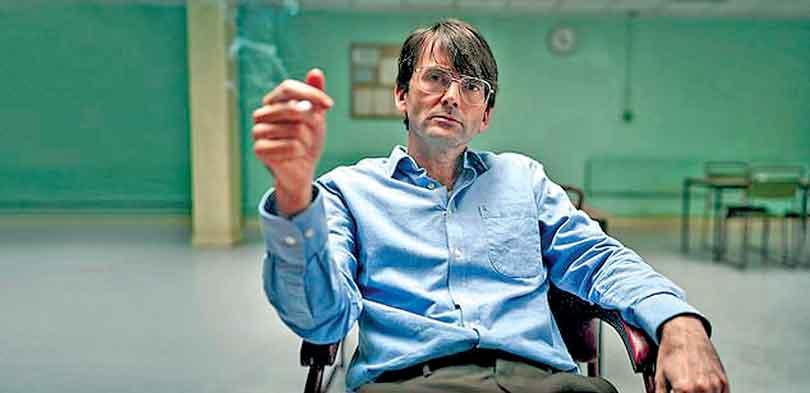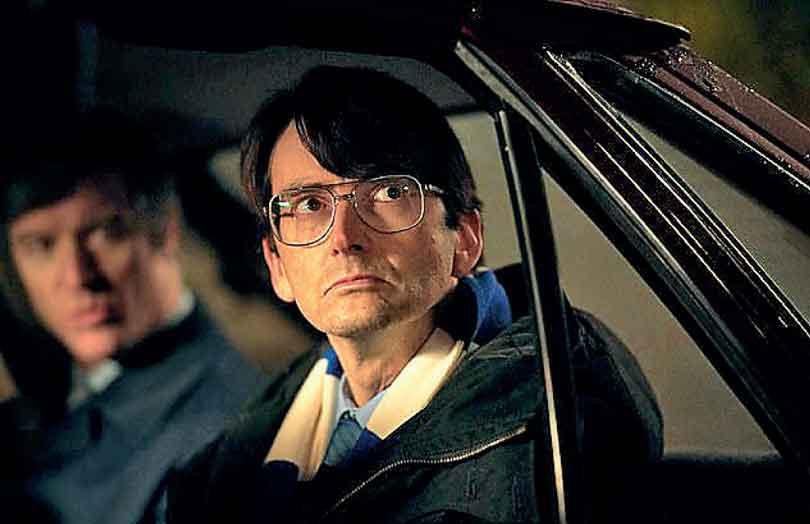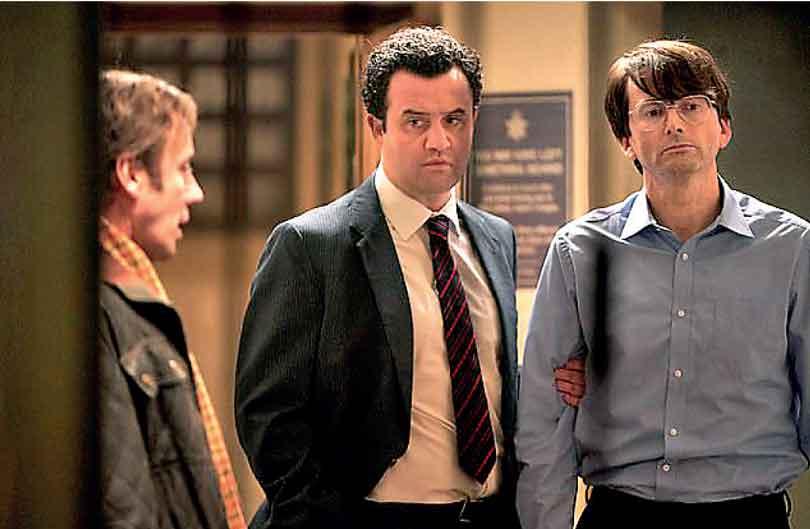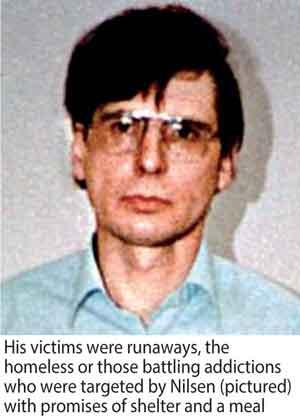18 Sep 2020 - {{hitsCtrl.values.hits}}

I felt those same chills as David Tennant (pictured) portrayed serial killer Dennis Nilsen in what was a breathtaking and career defining performance in Des
Hannibal Lecter’s declaration in The Silence Of The Lambs that he once ate a census taker’s liver ‘with some fava beans and a nice chianti’ remains one of the most memorable moments in cinematic history. Mesmerising, chilling… but utterly fictitious.
Sitting in a police interview room, all politeness and perfect posture, I felt those same chills as David Tennant portrayed serial killer Dennis Nilsen in what was a breathtaking and careerdefining performance in Des. Nilsen calmly offered up the details of those he had murdered and then butchered as though he was reeling off items on a shopping list. He even joked about his crimes – if he hadn’t strangled one of the victims, he remarked, then his cooking would probably have killed him anyway.
The difference is, unlike Lecter, Nilsen existed. His victims – the exact number unknown and many never identified – were very much real. They were runaways, the homeless or those battling addictions who were targeted by Nilsen with promises of shelter and a meal.
In recent years, Britain has developed an endless fascination with serial killers and any TV drama based on a real-life crime is bound to attract a big audience.
But that doesn’t make it any easier to dramatise such sickening crimes without glorifying the killer or causing distress to the victim’s families.
The creators of Des got round this using great sensitivity and painstaking attention to detail. The actors spoke to detectives who worked on the case as well as Nilsen’s former friends and colleagues. No back story was given to humanise him, no extenuating circumstances offered. He was a monster and that was that.

David Tennant revealed his desire not to merely pull off an impersonation but to get under the skin of the man

In Des (the name Nilsen liked to be called by) there were flashes of temper but, for the most part, Tennant portrayed him with quiet understatement
To capture every shade of that evil, an exact replica of Nilsen’s infamous flat at 23 Cranley Gardens in North London was created by the set designers – right down to the identical wallpaper. It looked grim, seedy and darkly disturbing.
It was here, in 1983, that the action unfolded. As soon as DCI Peter Jay (Daniel Mays) arrived at the address where human body parts had been found blocking the drains, he knew something sinister was afoot. ‘I don’t like beating about, where’s the rest of the body,’ he asked Nilsen. ‘In the cupboard,’ he replied as flippantly as if he were telling the detective where to find a clean mug.
 Unlike other criminals, Nilsen coughed up straight away to his crimes, even directing detectives to another London address where bodies lay under floorboards and buried in the garden.
Unlike other criminals, Nilsen coughed up straight away to his crimes, even directing detectives to another London address where bodies lay under floorboards and buried in the garden.
The confessions were so staggering that police thought he was playing them. But he was just a narcissist, craving notoriety for the terrible crimes he’d committed.
In an interview, David Tennant revealed his desire not to merely pull off an impersonation but to get under the skin of the man who replied ‘I was hoping you could tell me’, when detectives asked why he had killed so many in cold blood.
One of the most compelling things about Nilsen, and so brilliantly communicated by Tennant, was how utterly pedestrian and ordinary he seemed on the outside. He dressed like a train spotter, worked as a civil servant and yet he was obsessed with his image and legacy.
And in Des (the name Nilsen liked to be called by) there were flashes of temper but, for the most part, Tennant portrayed him with quiet understatement.
It was Nick Ross who, at the end of every episode of Crimewatch, gently told the viewer: ‘Don’t have nightmares.’ When it comes to terrifying Des, he may as well have said: ‘Don’t even bother going to bed.’
Daily Mail
24 Nov 2024 5 hours ago
24 Nov 2024 8 hours ago
24 Nov 2024 9 hours ago
24 Nov 2024 9 hours ago